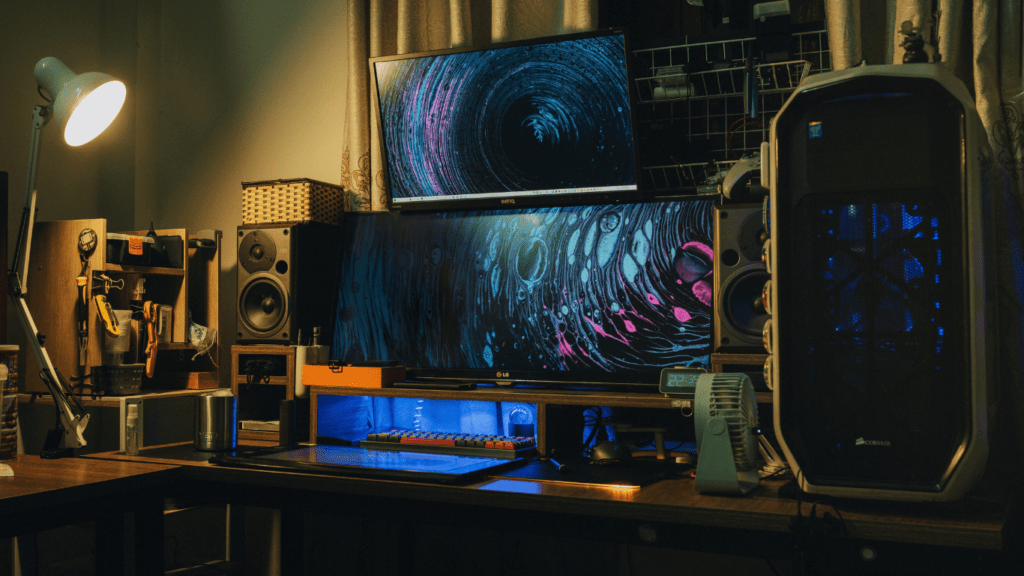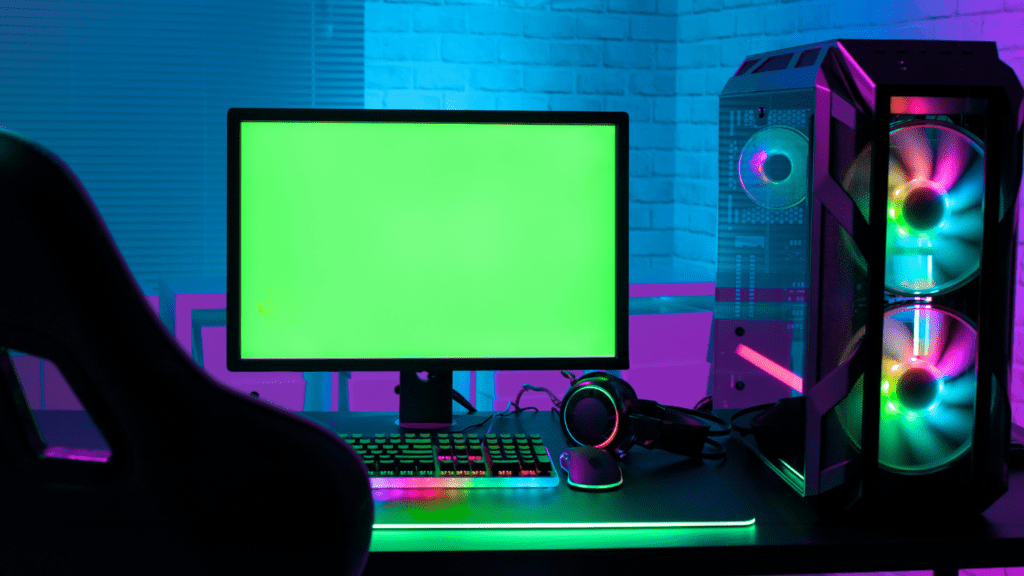Embarking on the journey of building your first gaming PC can be both exciting and daunting. As a newbie in the world of custom PC assembly, I understand the mix of anticipation and uncertainty that comes with this endeavor. In this step-by-step guide, I’ll walk you through the process of creating a gaming rig that suits your needs and preferences.
From selecting the right components to assembling them with precision, each step plays a crucial role in bringing your gaming PC to life. As I share my insights and tips gained from personal experience, you’ll gain the confidence to tackle this project with ease. Whether you’re aiming for high-performance gameplay or looking to explore the realm of PC building, this guide is designed to support you every step of the way.
Choosing the Right Components
When it comes to building your first gaming PC, selecting the right components is crucial. Each part plays a vital role in the overall performance of your system. Let’s explore the key components you need to consider.
CPU: The Brain of Your Gaming PC
The Central Processing Unit, or CPU, is essentially the brain of your gaming PC. It handles all the calculations and instructions necessary for your games to run smoothly. When choosing a CPU, consider factors such as the number of cores, clock speed, and compatibility with your motherboard. Popular choices include AMD Ryzen and Intel Core processors, offering a balance between price and performance.
GPU: The Heart of Gaming Performance
The Graphics Processing Unit, or GPU, is like the heart of your gaming PC, responsible for rendering images and ensuring smooth gameplay. When selecting a GPU, look at factors like VRAM capacity, clock speeds, and cooling solutions. Brands such as NVIDIA and AMD offer a range of GPUs tailored to different budget and performance needs. High-end GPUs like the NVIDIA RTX series provide excellent graphics quality for immersive gaming experiences.
RAM and Storage Options
In addition to the CPU and GPU, your gaming PC needs sufficient Random Access Memory (RAM) for multitasking and smooth operation. Choose RAM modules with adequate capacity and high speeds for optimal performance. When it comes to storage, consider a solid-state drive (SSD) for fast boot times and game loading, complemented by a larger hard disk drive (HDD) for storage capacity. Striking the right balance between RAM and storage options ensures a seamless gaming experience on your newly built PC.
Planning Your Budget
When planning my budget for building a gaming PC, I focus on balancing cost and performance. It’s crucial to allocate funds wisely to ensure I get the best performance within my budget constraints. Here’s how I approach it:
Balancing Cost and Performance
I prioritize components that have the most significant impact on gaming performance, such as the CPU and GPU. By allocating a higher portion of my budget to these key elements, I can ensure smoother gameplay and better graphics quality. However, I also consider cost-effective options for components like RAM and storage to maintain a balance between performance and affordability.
Where to Spend More vs. Save
In my experience, it’s worth investing more in the CPU and GPU to future-proof my gaming rig. These components tend to have a more extended lifespan and significantly impact gaming performance. On the other hand, I look for opportunities to save on parts like RAM and storage, where incremental upgrades can be more cost-effective without compromising overall performance. By prioritizing critical components while being mindful of cost-effective alternatives, I can build a gaming PC that offers high performance without breaking the bank.
Assembly Process
When it comes to assembling your gaming PC, attention to detail is crucial. Let’s dive into the step-by-step process to bring your components together seamlessly.
Installing the CPU and Cooler
I start by carefully unboxing the CPU, ensuring not to touch the pins. Aligning the CPU with the socket, I gently place it in, making sure it fits snugly. Next, I attach the CPU cooler following the manufacturer’s instructions, applying thermal paste for optimal heat dissipation.
Setting Up the Motherboard
Securing the motherboard in the case, I fasten it with screws to ensure stability. Connecting the power supply, front panel connectors, and case fans to the designated slots on the motherboard, I double-check all connections to prevent any issues later on.
Wiring Everything Together
Working methodically, I organize the cables neatly, routing them through the case’s cable management system. Connecting the GPU, storage drives, and additional components, I ensure each cable is plugged into the correct port to avoid any connectivity issues during the setup process.
By following these assembly steps diligently, you can build your gaming PC efficiently and enjoy a seamless gaming experience once everything is connected and powered on.
Setting Up the Operating System and Drivers

Setting up the operating system and drivers on your newly built gaming PC is crucial to ensure optimal performance and compatibility with your hardware. Let’s delve into the essential steps of installing the operating system and updating drivers for a seamless gaming experience.
Installing Windows or Alternative OS
When setting up your gaming rig, the first step is installing the operating system (OS). For most gaming PCs, Windows is the go-to choice due to its wide compatibility with games and software. To install Windows OS, you’ll need a bootable USB drive with the installation files. Simply plug the USB into your PC, boot from the drive, and follow the on-screen instructions to install Windows.
If you prefer an alternative OS like Linux for gaming, ensure that your games are compatible with the platform. Installing Linux involves creating a bootable USB with the Linux distribution of your choice and following the installation process. Remember to check for drivers and software that support gaming on your chosen OS.
Updating Drivers for Optimal Performance
After installing the OS, the next crucial step is updating drivers for your components to ensure optimal performance. Drivers act as communication bridges between the OS and your hardware, enabling them to work together efficiently. Start by updating your graphics card drivers, as they play a significant role in gaming performance.
Visit the official websites of your component manufacturers to download the latest drivers. For your GPU, you can download NVIDIA GeForce Experience or AMD Radeon Software to update drivers automatically. Additionally, check for updates for your motherboard, CPU, and other peripherals to enhance compatibility and performance.
By installing the operating system and updating drivers correctly, you can unlock the full potential of your gaming PC, ensuring smooth gameplay and optimal graphics quality.
Troubleshooting Common Issues
After assembling your gaming PC, it’s essential to perform post-build checks to ensure everything is working correctly. Here are some common issues you might encounter and how to fix them:
Post-Build Checks and Fixes
- No Display Output: If your monitor doesn’t show any image, check if the GPU is correctly seated in the PCIe slot and that the monitor is connected to the GPU, not the motherboard.
- BIOS Beep Codes: Pay attention to any beep codes during startup as they can indicate hardware issues such as RAM problems or CPU errors. Refer to your motherboard manual for troubleshooting.
- Overheating: Ensure all fans are working correctly, and there’s proper airflow in the case. Check that the CPU cooler is properly installed with thermal paste to prevent overheating.
- Boot Failure: If your PC fails to boot, check the power supply connections, RAM seating, and that all components are correctly connected to the motherboard.
When to Seek Professional Help
If you encounter persistent issues that you can’t troubleshoot on your own or if you’re unsure about handling delicate components, it’s best to seek professional help. A certified technician can diagnose and fix complex hardware problems, ensuring your gaming PC runs smoothly.


 Hilda Arenas, a key contributor at Your Gaming Colony, has significantly enriched the platform with her extensive knowledge and passion for video games. While not the founder, Hilda plays an integral role in shaping the site's content and community engagement. Her deep understanding of the gaming world and her dedication to quality have made her contributions invaluable to the platform.
Hilda's expertise is evident in the up-to-the-minute gaming news she helps deliver, ensuring that visitors are always informed about the latest industry developments. She is instrumental in producing high-quality, in-depth reviews that offer honest and detailed assessments of new releases, classic games, and everything in between. Her commitment to excellence ensures that the platform's content remains reliable and engaging.
Hilda Arenas, a key contributor at Your Gaming Colony, has significantly enriched the platform with her extensive knowledge and passion for video games. While not the founder, Hilda plays an integral role in shaping the site's content and community engagement. Her deep understanding of the gaming world and her dedication to quality have made her contributions invaluable to the platform.
Hilda's expertise is evident in the up-to-the-minute gaming news she helps deliver, ensuring that visitors are always informed about the latest industry developments. She is instrumental in producing high-quality, in-depth reviews that offer honest and detailed assessments of new releases, classic games, and everything in between. Her commitment to excellence ensures that the platform's content remains reliable and engaging.
